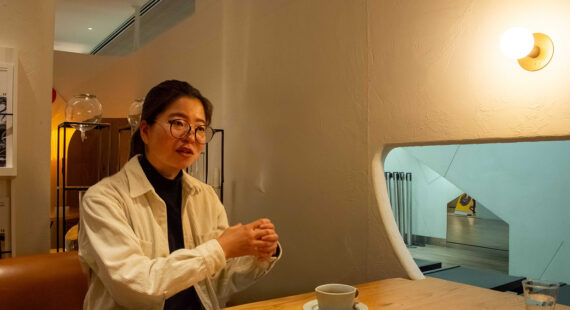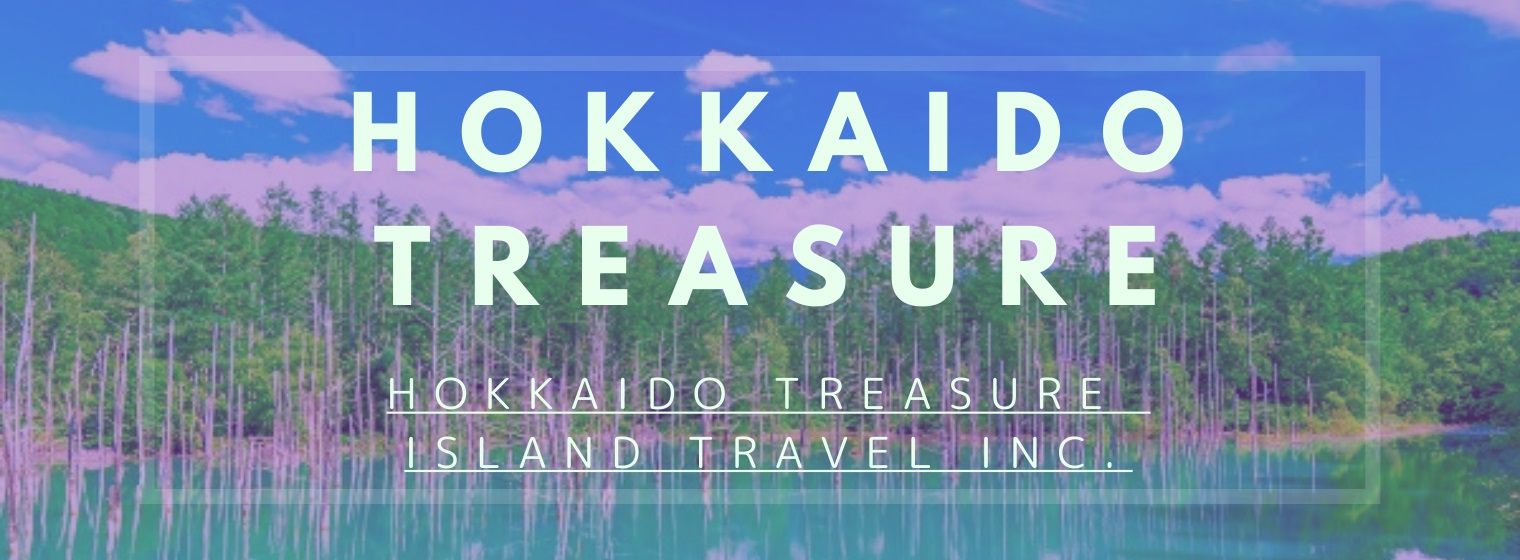Hokkaido, a vast land occupying over 20% of Japan’s total area. Untouched wilderness, abundant gourmet cuisine, and hot springs – each and every aspect is utterly captivating. To fully recount all the charms of Hokkaido would be difficult to do all in one go. Therefore, this time we shall focus on Jozankei.
Jozankei is a hot spring resort near Sapporo where you can easily experience wellness tourism. Here, you can restore your body and mind through the natural beauty and culture of the four seasons, as well as the hot spring experience, and there is also a wealth of easily accessible activities to enjoy. Nestled within abundant nature, Jozankei reveals diverse expressions throughout the changing seasons, offering new, moving views, no matter when you visit. Spring, with its beautiful babbling brooks fed by melting snow. Summer, cool and refreshing amid lush forest greenery. Autumn, breathtakingly dyed in vibrant colours. Winter, enveloped in a silent blanket of silver snow. Each season’s overwhelming natural beauty stimulates all the senses.
Once you visit Jozankei, you might just become hooked!
Now let us introduce Jozankei in a little more detail. Jozankei is an area rich in nature within Shikotsu-Toya National Park. Shikotsu-Toya National Park is situated in southwestern Hokkaido. In addition to two major caldera lakes, Lake Shikotsu and Lake Toya, it offers views of various types of volcanoes and volcanic landforms, including Mt. Yotei, Mt. Usu, and Mt. Tarumae. Thanks to this volcanic activity, Shikotsu-Toya National Park is home to some of Hokkaido’s leading hot spring resorts such as Noboribetsu, Lake Toya, and especially Jozankei, which we introduce here, and the scenic beauty woven by lakes, forests, and volcanoes soothes the soul.

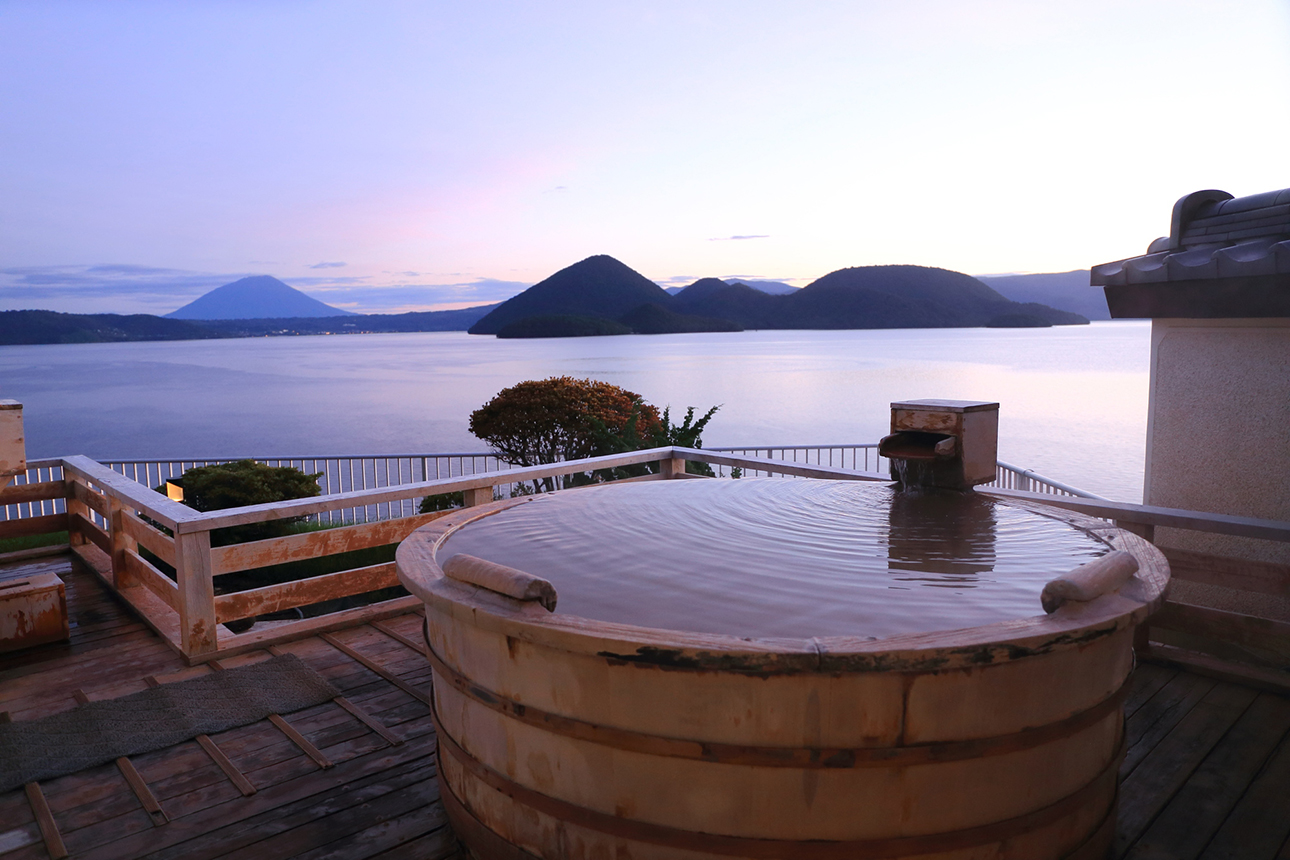
In particular, Jozankei features mountainous terrain formed by relatively ancient volcanoes such as Mt. Muine, Mt. Soranuma, and Mt. Sapporo. These mountains support alpine flora and offer superb views, making them ideal day-hiking destinations accessible in just one hour by car from the Sapporo area. Needless to say, this environment with its clear streams, valleys, forests, and mountains is perfectly suited to wellness tourism. Here, you can enjoy extraordinary experiences involving nature, culture, and culinary adventures.
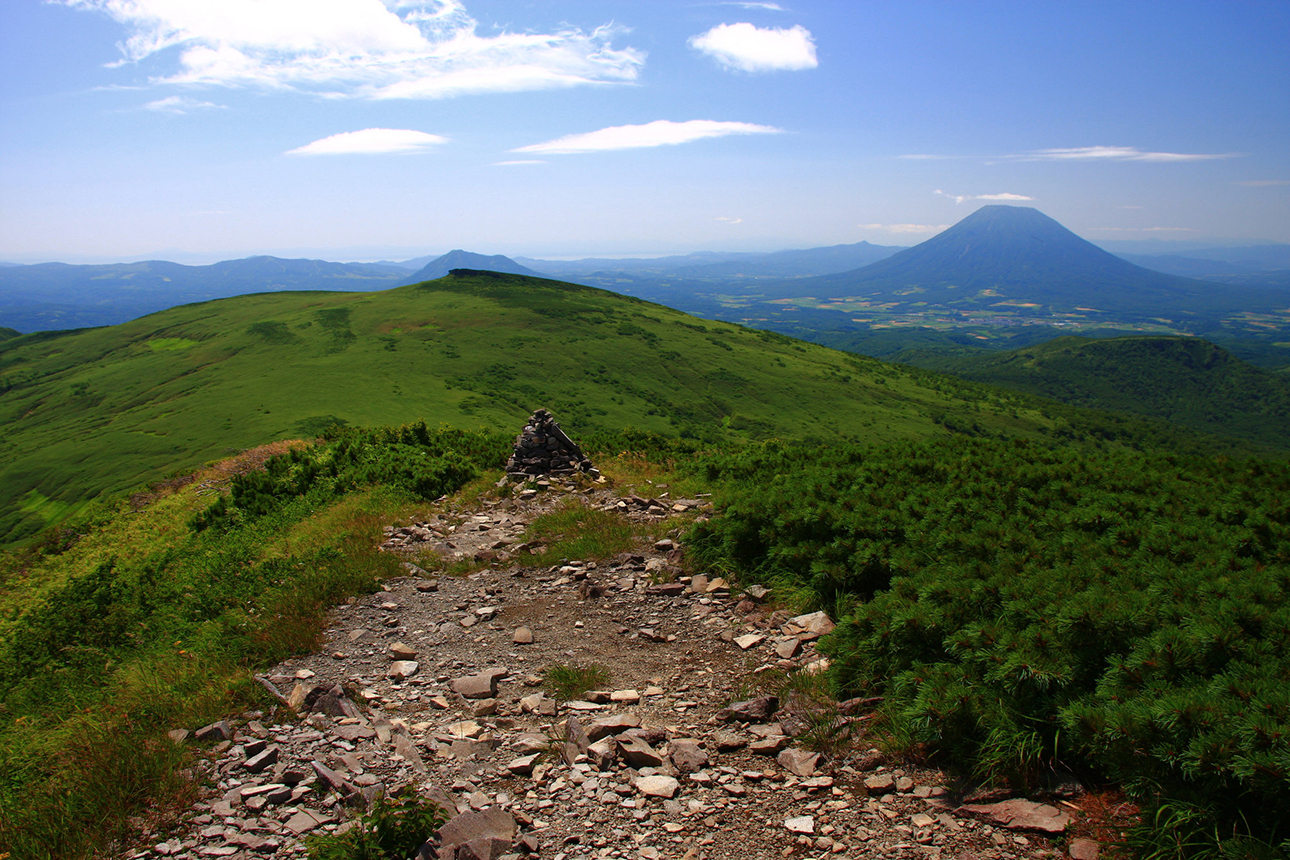
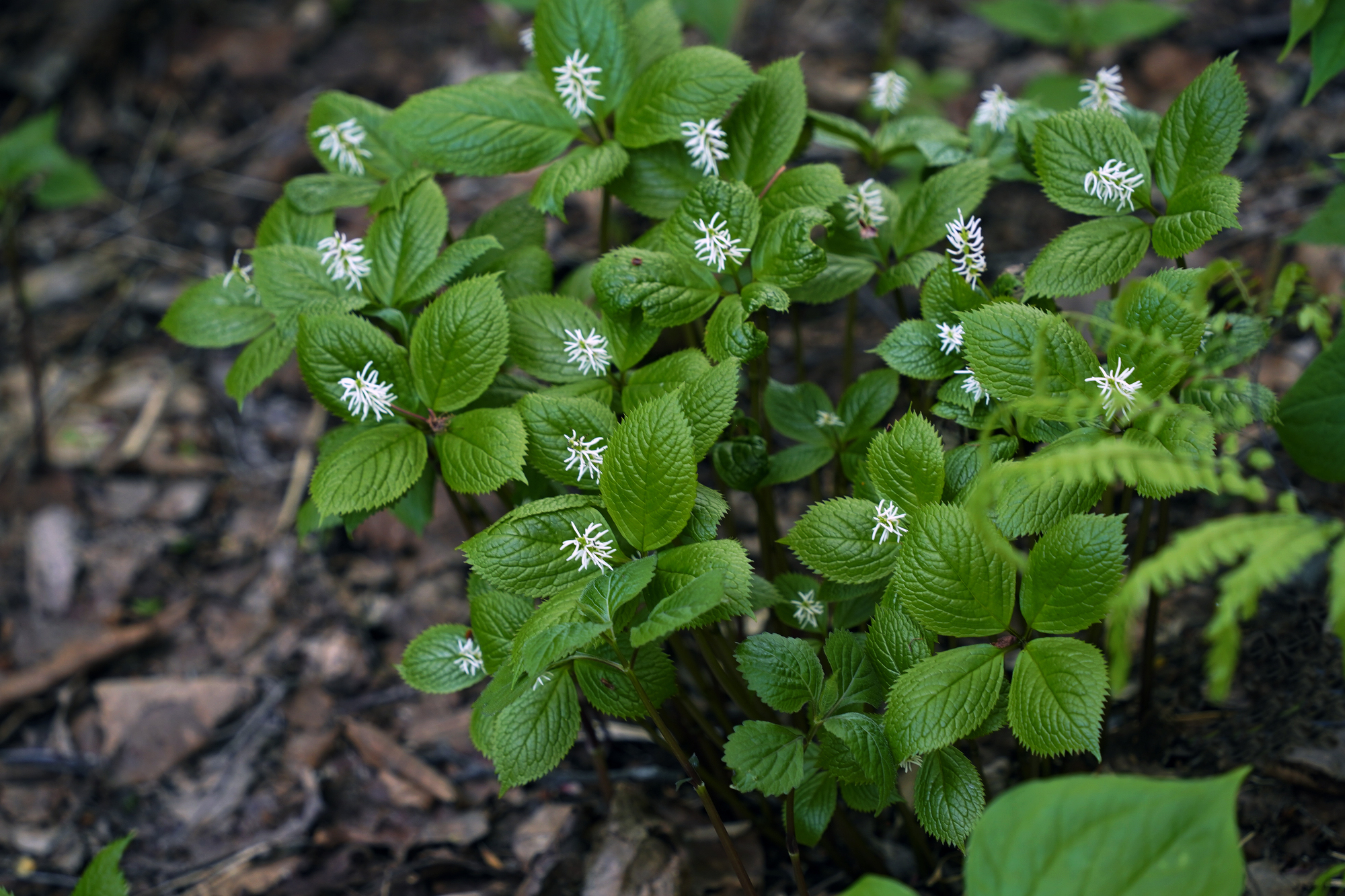
Wellness tourism aims precisely at this style of travel: utilizing such rich natural environments and hot spring resources to refresh the body and mind, and maintain good health. Naturally, combining this with the exploration of culture and history, along with the delicious dining that is an important element of wellness tourism, will make for an even more splendid experience.
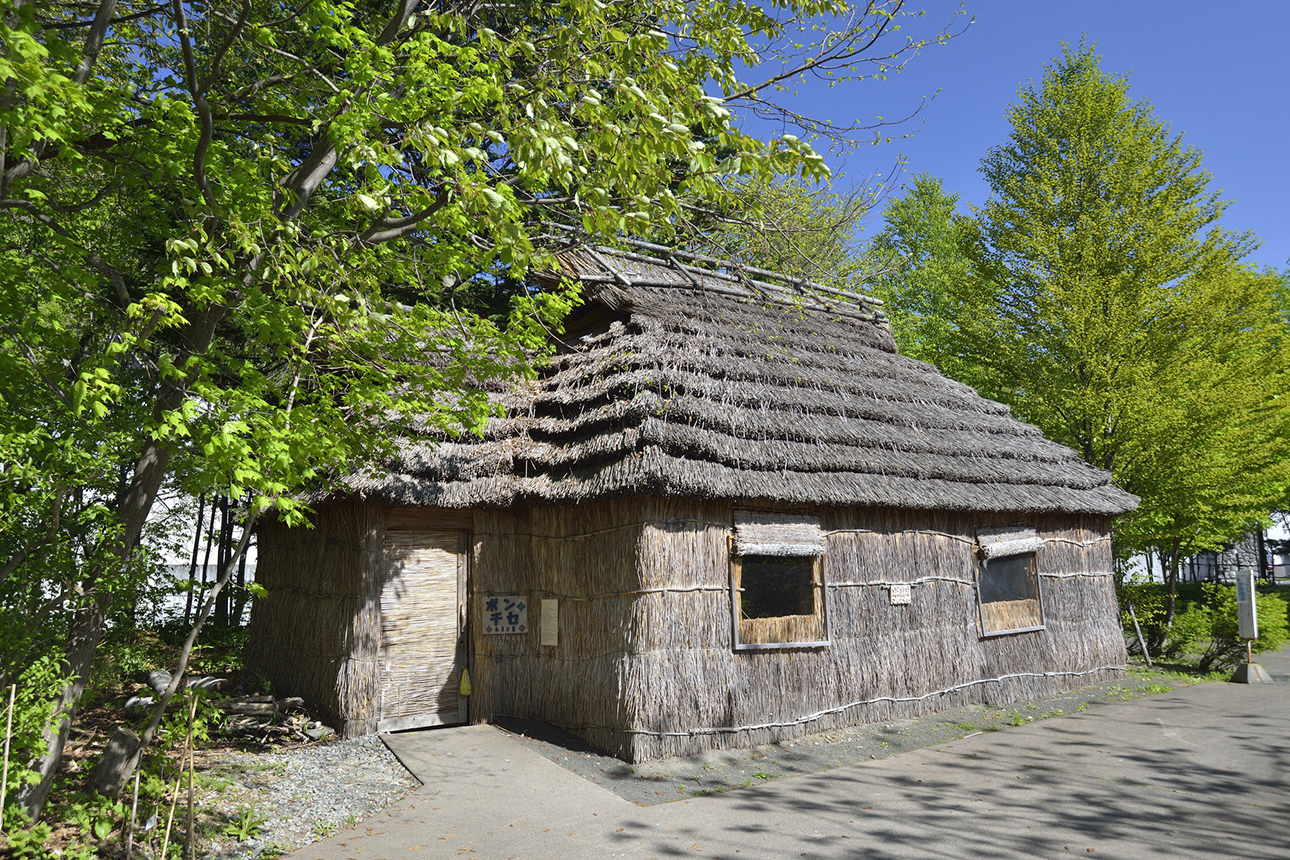
Regarding culture and history, for example, near Jozankei Onsen is the Ainu Cultural Promotion Center, commonly known as Sapporo Pirika Kotan. Sapporo Pirika Kotan means ‘Sapporo’s Beautiful Village’ in the Ainu language. This facility allows you to learn about the Ainu people, who are indigenous to Hokkaido and have developed their own unique culture, and to gain a deeper understanding of their way of life, history, and culture. The exhibition room displays approximately 300 items, including traditional costumes and folk tools, which you can actually handle as well as observe.
When speaking of Jozankei, we must not forget the ancient kappa legend. The kappa has become a symbol of Jozankei, which has not only erected statues but also holds the Jozankei Kappa Festival. The kappa is Japan’s most famous yokai (monster); it has a plate on its head, a shell on its back, and large webbed hands and feet.
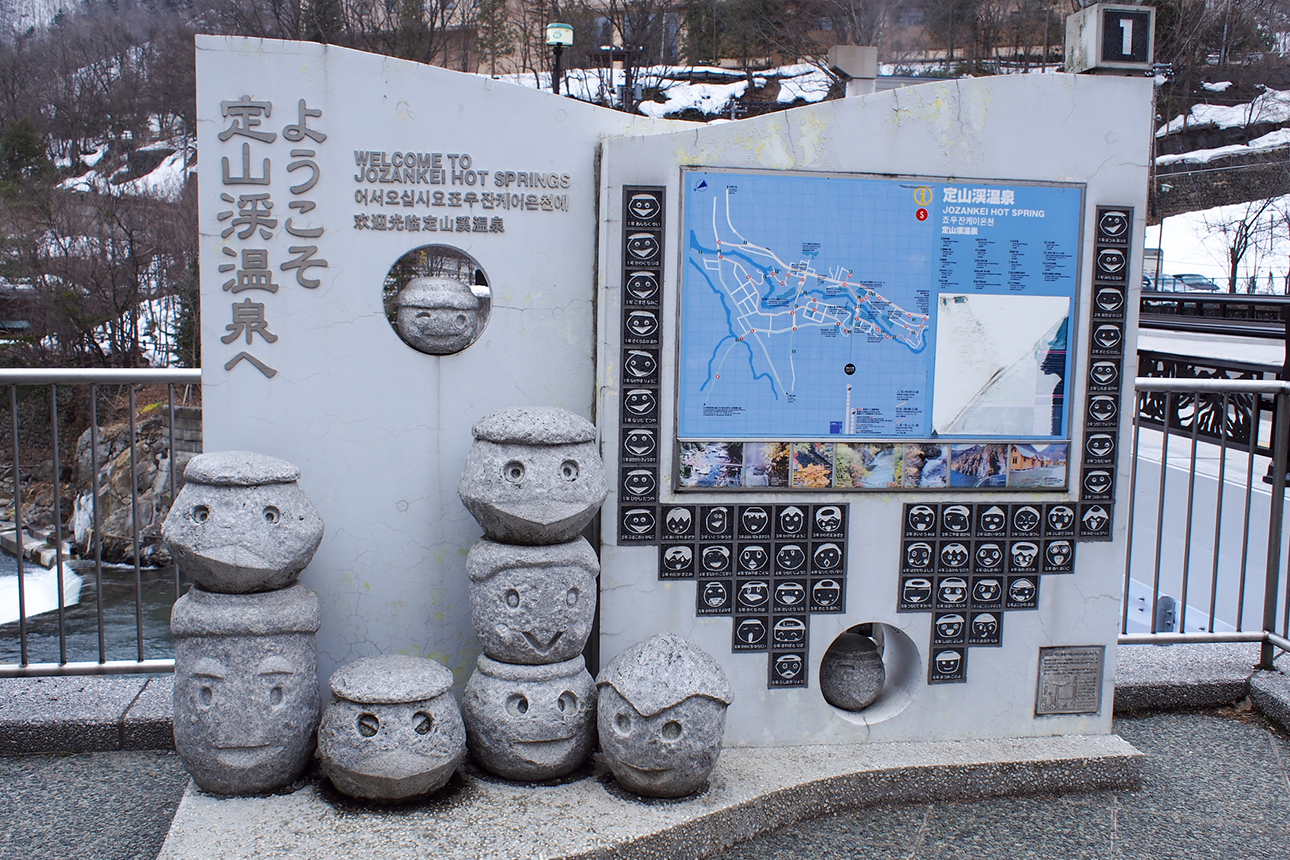
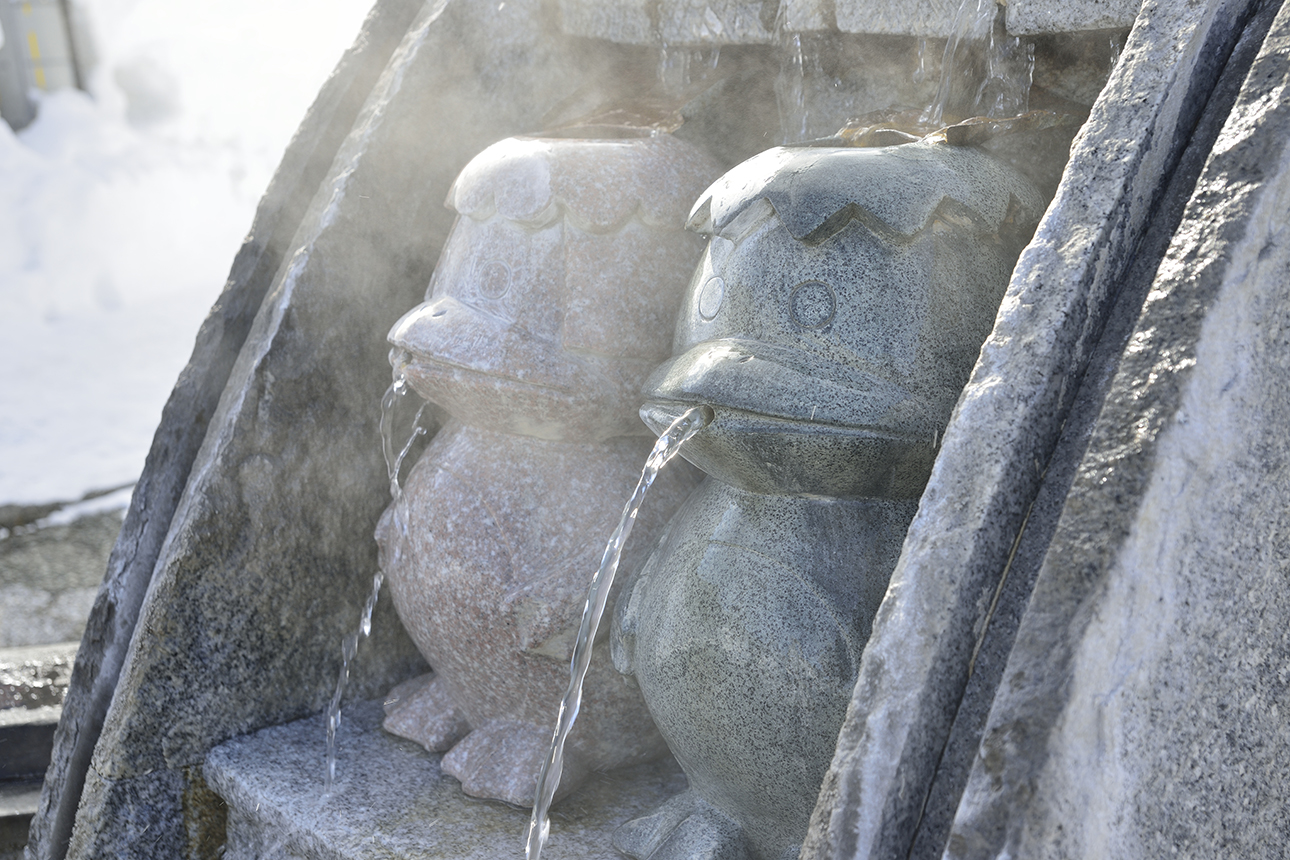

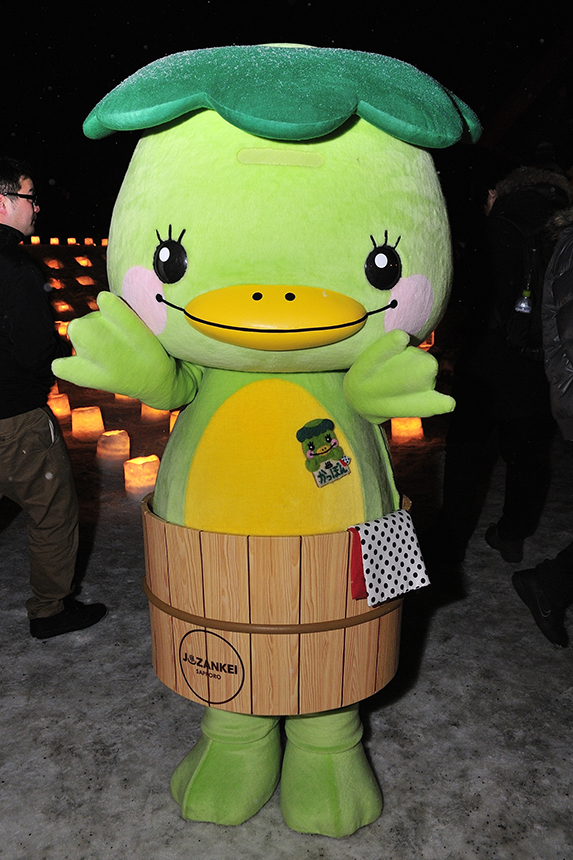
In the kappa legend, a young man renowned throughout the village for his good looks was fishing in the river when he was suddenly pulled under and sank to the riverbed. Those who witnessed this immediately dived in to rescue him, but the water was too deep and they could not save him. Strangely, a year passed without his body ever being found. On the night of the first anniversary of his death, the young man appeared in his father’s dream. He declared, ‘I was taken by a female kappa and married her. Now I live happily with my wife and child.’ Surprisingly, the tale has a happy ending. Many of the kappa statues are rather charming and have now become mascots. These kappa statues, seen throughout the hot spring town, were created by sculptors from Hokkaido and beyond.
With regard to dining, while the refined cuisine at hotels and ryokans (Japanese inns) is naturally outstanding, Jozankei boasts an abundance of distinctive establishments such as gelato parlours, pizzerias, bakeries, patisseries, and stylish restaurants. These offer thoroughly enjoyable experiences to enrich your journey from start to finish.
What constitutes the travel style of wellness tourism?

The history of wellness tourism stretches back to ancient times. In pre-Christian Rome, warriors utilized thermal springs to treat wounds and illnesses. Roman citizens, regardless of wealth, frequented public baths in the suburbs, where they not only bathed but also engaged in recreation such as exercise and debate. Modern wellness tourism refers to a style of travel aimed at restoring physical and mental balance or experiencing rejuvenation through travel.
Amid the changing lifestyles brought about by the post-pandemic era, what people struggling with stress and anxiety seek is a way to calm their minds, refresh their spirits, and restore harmony and connection with themselves and those around them. Wellness tourism, which focuses on physical and mental wellbeing and aims to provide insights for living more happily, is growing in popularity worldwide. This is thought to stem from such shifts in mindsets and lifestyles.
The typical benefits gained through wellness tourism include physical and mental relaxation, enhanced immunity, beauty benefits, improved interpersonal relationships, and broader knowledge and insights. The wellness tourism genre encompasses a wide variety of options, with representative examples including hot springs, adventure, culture, and experiences in nature. However, as the measure of health and happiness differs from person to person, there are no fixed rules; you may simply seek out your own wellness tourism that enhances your health and sense of well-being.
Hot Springs and Wellness Tourism
The quintessential experience available in Jozankei is, of course, the hot springs. Since ancient times, hot springs have been utilized for the treatment of illness and injury in Japan as well. Hot springs offer not only physical effects through warmth, buoyancy, and water pressure, but also the effects of chemical components derived from the spring water’s composition, alongside modulating effects that influence the nervous system and hormones. In addition to the effects of the hot springs themselves, the health benefits of hot spring resorts also include the therapeutic effect of a change of scenery, the benefits of the cuisine there, and the restorative effect of rest following bathing or exercise. Given all this, wellness, which involves striving for a balanced lifestyle encompassing physical, social, mental, emotional, intellectual, environmental, and occupational aspects, is thought to be exceptionally well-suited to hot springs.

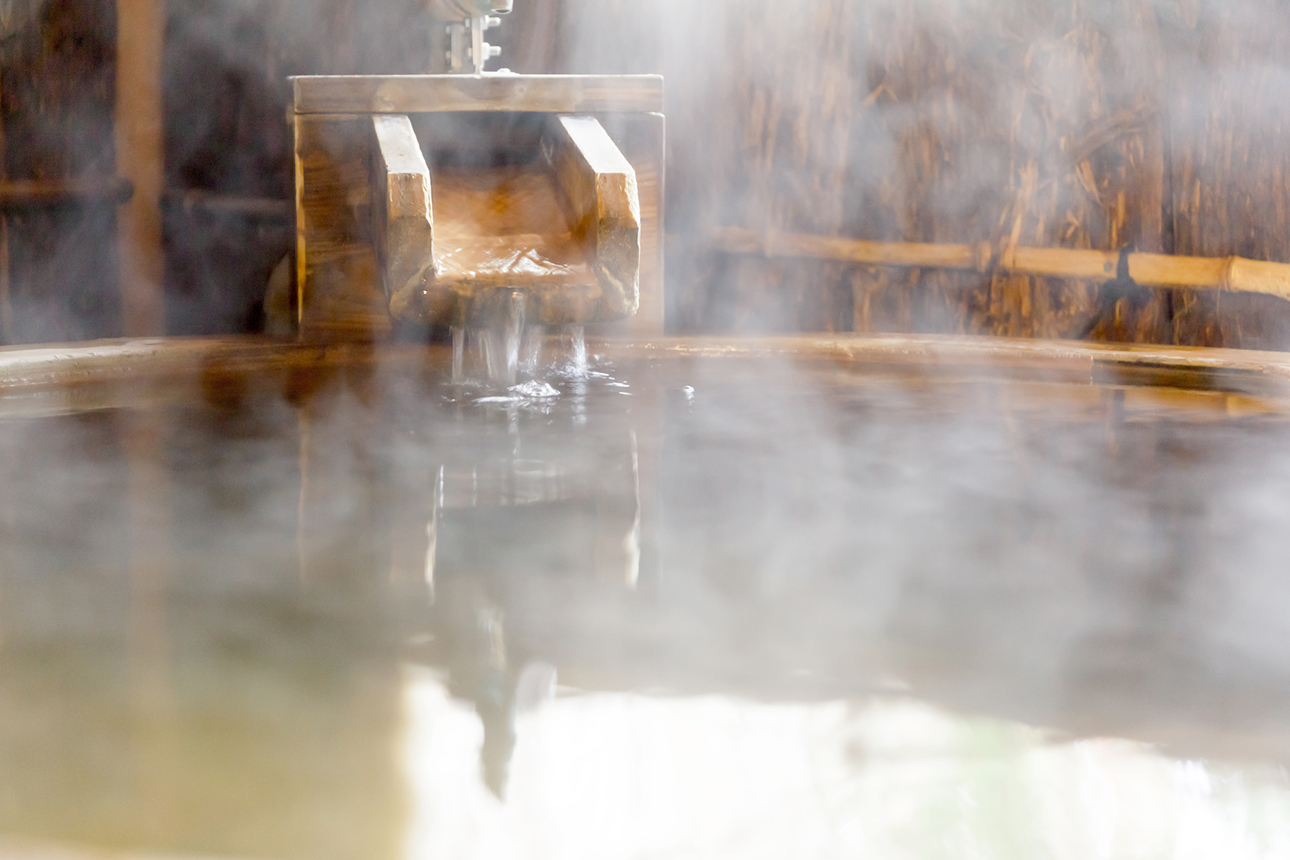
Jozankei is renowned as one of Hokkaido’s three major hot spring resorts. Incidentally, the other two are Noboribetsu Onsen and Yunokawa Onsen in Hakodate. Jozankei offers accommodation at hotels and Japanese inns, as well as day-trip hot spring facilities. The hot springs bubbling up in Jozankei Onsen are sodium chloride springs, characterized by their colourless, transparent appearance and a mild saltiness. The neutral, high-quality hot spring water is gentle on the body and has health-enhancing properties. When bathing, the salt adheres to the skin, preventing the evaporation of sweat and warming the body thoroughly from within. Furthermore, as salt possesses antibacterial properties, inhaling the vapor helps to purify the airways and is utilized as a treatment for respiratory conditions.
The history of Jozankei dates back to 1866, when the ascetic monk Miizumi Jozan, guided by the Ainu people, discovered the spring source. Jozan established a hot spring inn at the site along the upper reaches of the Toyohira River, developing it into a therapeutic hot spring resort. He continued to devote himself to the development of the hot spring area thereafter. In honour of Jozan’s achievements, the hot spring district came to be named Jozankei. With the opening of the Jozankei Railway in 1918, Jozankei Onsen developed as a resort and came to be known as ‘Sapporo’s oasis’.
The Jozankei Railway was originally intended for timber transport. In 1890, approximately 6,000 hectares of forest in and around Jozankei became the property of the Imperial Household. The then Department of the Imperial Household began to explore the construction of a railway to transport the large quantities of timber harvested there to the Sapporo area. Despite various twists and turns, the business community ultimately agreed to develop transport infrastructure, widely promote the hot springs throughout society, and foster regional prosperity. Consequently, the privately-owned Jozankei Railway Company was established in 1915.
Timber, ore from the Toyoha Mine, and Sapporo soft stone quarried in the Ishiyama district were transported from the Jozankei area. Hot spring visitors were transported to Jozankei from central Sapporo. The hot spring town gained in fame after the 1920s when the Jozankei Railway began operating and brought a steady flow of visitors. It would be no exaggeration to say that without the Jozankei Railway, the development of Jozankei as we know it today would not have been possible.
Seasonal Wellness Tourism in Jozankei
While there appear to be various broad categories for experiences and activities, I believe wellness tourism in Jozankei centres primarily on three main themes: hot springs and spa experiences; nature experiences and outdoor activities; and food, nutrition, and healthy living. Here we will introduce some of the activities you can enjoy throughout the seasons in Jozankei.
Spring
Spring in Jozankei, when trees begin to bud and the season of fresh greenery commences. Why not stroll along the valley paths adjacent to the hot spring town, feeling the pleasant breeze? Compared to central Sapporo, Jozankei sees its cherry blossoms peak around early May, as flowering occurs approximately two weeks later.

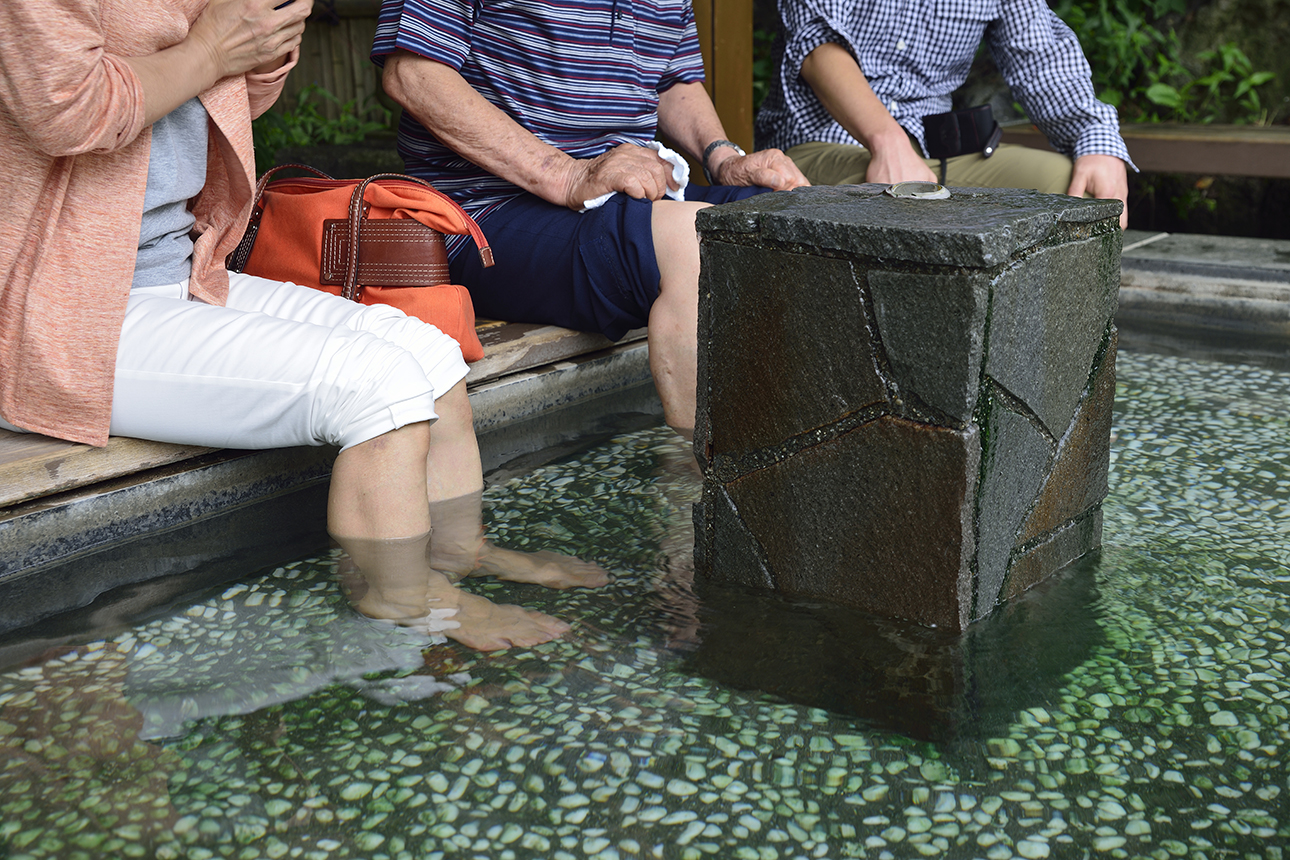
Taro-no-Yu, a free footbath in Jozankei Onsen, opened in 2003. While soaking your feet, you can enjoy lively conversations in which you can form a genuine connection with total strangers. Another new footbath spot is the Futami Park area, a three to four-minute walk from the hot spring town. The third new footbath facility in the town, Futami no Ashiyu, is situated on a small hill surrounded by trees. Here, you can casually enjoy Jozankei’s high-quality hot spring waters while experiencing the rich natural beauty of the changing seasons.
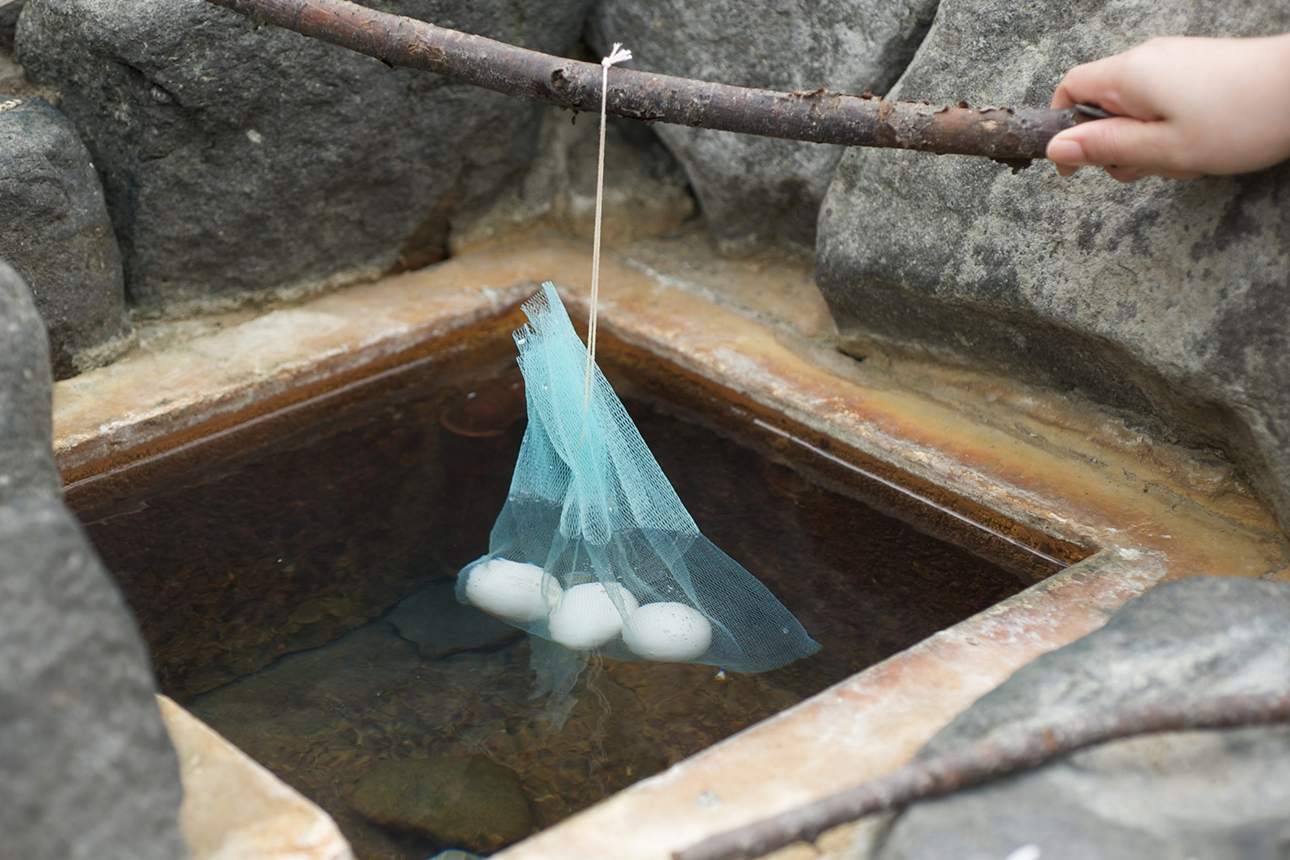
Furthermore, within Jozan Spring Park, there is a hot water tub where you can easily make onsen eggs, boiled in hot spring waters. Its water is piped in from Jozankei’s high-temperature source, which exceeds 80°C. Using this water, you can make onsen eggs. Typically, delicious onsen eggs are ready in about 20 minutes.

Additionally, Jozankei Onsen offers the spring tradition of displaying approximately 400 carp streamers along the valley. This event will mark its 40th year in 2026 and is eagerly anticipated by many visitors each year. Koinobori are carp streamers displayed outdoors in May to pray for the advancement and well-being of boys.
Summer
There is an abundance of summer activities in Jozankei, including rafting, SUP/Stand-Up Paddle boarding, canoeing, hiking, forest bathing, bird watching, and plant observation. While some can be enjoyed in other seasons too, Hokkaido’s refreshing summer climate makes these activities truly exceptional. Visitors can admire Futami Suspension Bridge, the symbol of Jozankei, while strolling along riverside paths which follow the waters flowing through the hot spring town, or explore the cafés and sweet shops that have proliferated in the Jozankei area in recent years, enjoying a leisurely time immersed in nature.

Rafting takes place from late spring to early summer. During this period, the river level rises due to snowmelt from the mountains, offering thrilling rafting experiences unique to this season. Rafting is conducted on the course which offers the most enjoyment on that particular day, depending on the water volume. Its appeal lies in the thrill of navigating a rubber raft down a river flowing through deep gorges, experiencing numerous rapids, and taking in the beautiful scenery of the deep valleys. Experienced guides accompany participants, ensuring that even first-timers can enjoy the experience with peace of mind. You can also take a stable Canadian canoe and enjoy the spectacular view from the river. SUP is another casual activity that allows you to enjoy a leisurely cruise around while taking in the magnificent scenery of the valley.

For those who love walking, there are plenty of hiking trails from easy strolls around the hot spring town to more serious mountain climbing on Mt. Sapporo and Mt. Muine, all suited to different levels of physical fitness. The Jozankei area is also surrounded by deep virgin forests and mountains, and is located within Shikotsu-Toya National Park, which is home to a wide variety of flora and fauna, making it an ideal place for bird watching and plant observation.
Autumn
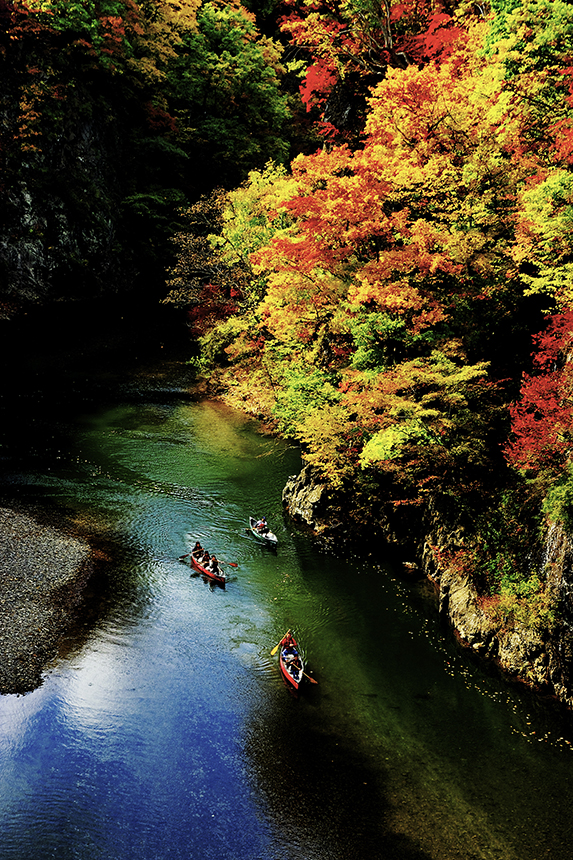
The reason why the autumn leaves in Jozankei are so beautiful and vibrant is said to be the Toyohira River that flows through the hot spring town and the temperature differences that are unique to the valley, which is surrounded by mountains. Because it is surrounded by mountains on all sides, you can enjoy the vibrant autumn leaves in all sorts of places, such as the hot spring town, walking paths, your hotel room, and open-air baths. Along the mountain streams, several walking paths offer views of the autumn colours featuring trees such as Japanese maples and mountain ash.
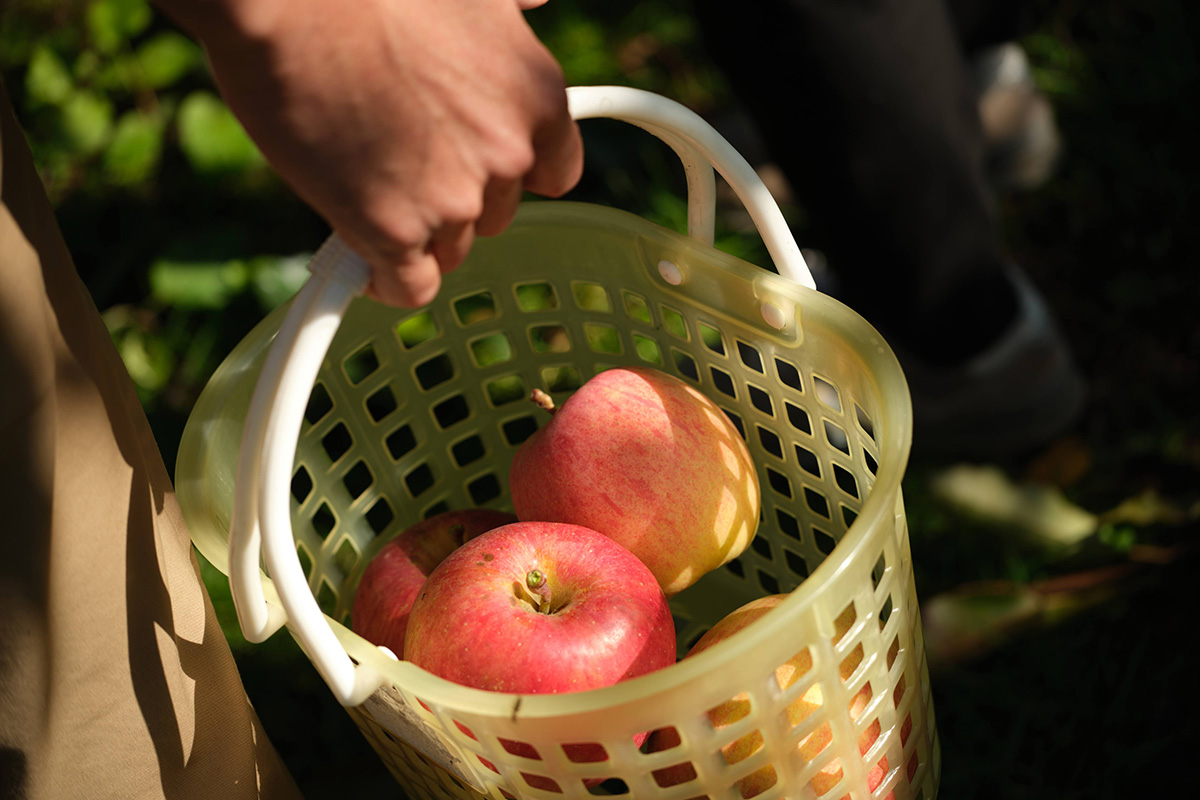
You can also enjoy picking pears, apples, grapes and other fruits; the appeal of autumn fruit picking in Jozankei lies in being able to enjoy both the autumn colours and fruit picking simultaneously, compare the flavours of several different fruits, and, depending on the facility, enjoy activities such as sports and gourmet experiences within the grounds.
Winter
Winter in Jozankei overwhelms you with its stunning, ink painting-like views created by snow piled on the trees. Its appeal lies in enjoying activities and events unique to this season, enveloped in a world of silver snow, in harmony with nature. Furthermore, soaking in an open-air bath while gazing out on the snowy landscape is a luxurious winter privilege. In particular, strolling effortlessly across snowfields wearing snowshoes is a recommended activity that allows everyone, regardless of age or gender, to enjoy the winter scenery.
Moreover, the Jozankei area boasts ski resorts renowned for some of Hokkaido’s finest powder snow and extensive slopes. Nearby Sapporo Kokusai Ski Resort offers skiing and snowboarding on expansive slopes with a maximum run length of 3.6 kilometres. Its diverse range of seven courses includes wide family runs over 100 metres in width and dynamic downhill courses for advanced skiers. The summit area, at an elevation of 1,100 metres, also boasts excellent views.
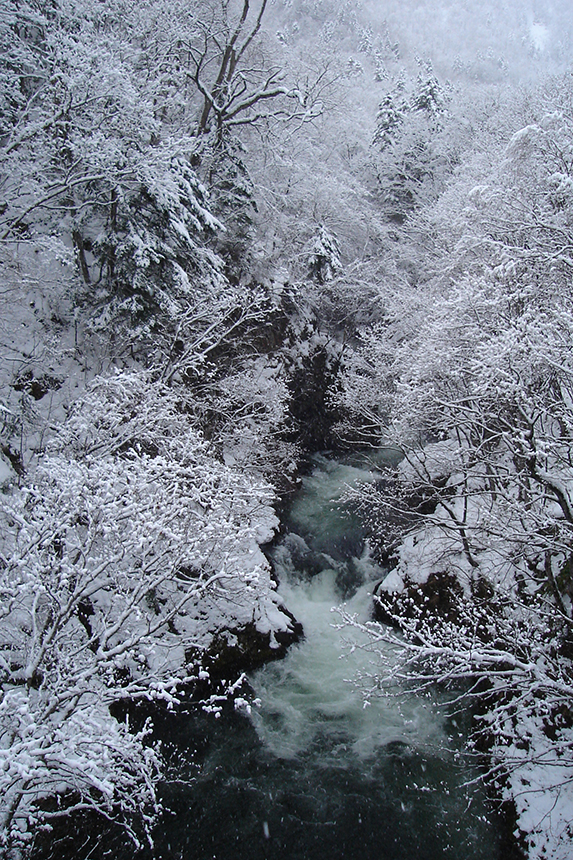

Another event we’d like you to experience is the Snow Candle Event held at Jozankei Shrine in January. Handmade snow candles adorn the shrine grounds, creating a fantastical scene that has become a winter tradition.

Venture just a little further afield from Jozankei Onsen
About three kilometres from Jozankei Onsen lies Hoheikyo Onsen, a day-trip hot spring. Hoheikyo Onsen boasts one of the Japan’s largest open-air baths, fed by 100% natural spring water flowing directly from the source. The abundant natural scenery stretching out before you transforms into a snow-viewing bath in winter, and the evening illuminations offer a uniquely enchanting atmosphere. The first thing that invariably astonishes you in the bathhouse extending beyond the retro building is the deposits that have solidified, covering everything from the bathtub to the floor. The minerals contained in the spring water crystallize, solidifying in the exact shape of the flowing water, forming a landscape of numerous small hills strung together.


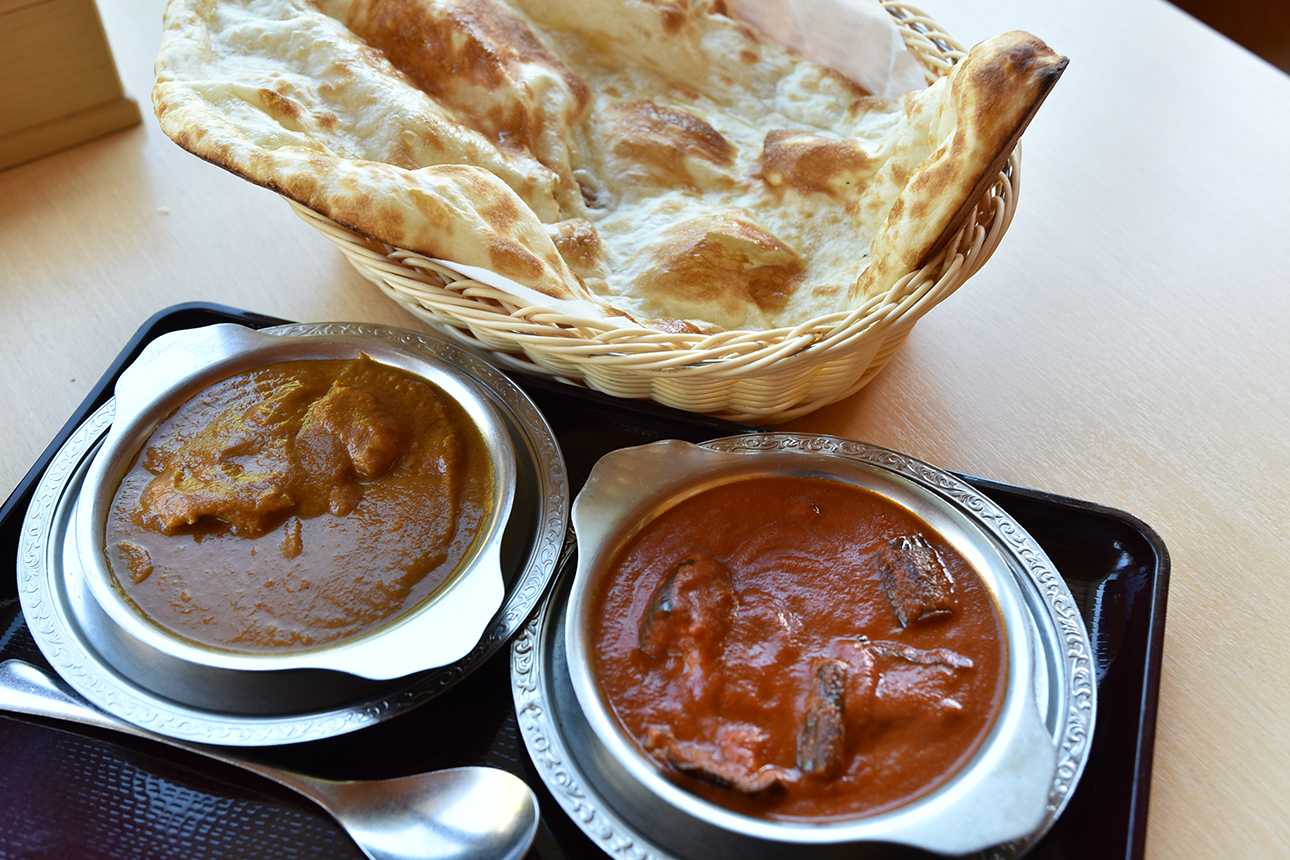
After the hot springs, you simply must try the signature Indian curry at the adjoining ONSEN Dining Hall before leaving. Why is curry on the menu at Hoheikyo Onsen, far from Sapporo city centre? The reason is that the former president of Hoheikyo Onsen once ran an Indian curry restaurant in Sapporo’s Susukino district, in the centre of Sapporo. When closing that previous establishment, he felt it would be a pity to dismiss the local staff he employed. So he invited them to relocate to the hot springs along with the equipment, and that’s how ONSEN Dining Hall began. Its curry has now become an indispensable, delicious local specialty of Hoheikyo Onsen.
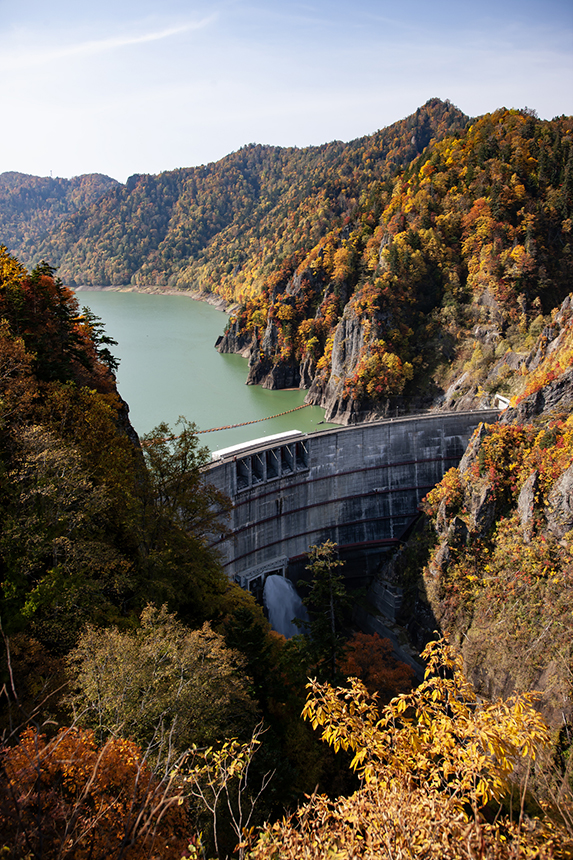
Furthermore, Hoheikyo Dam is situated a short distance from Hoheikyo Onsen, offering the combined attractions of abundant natural beauty, impressive dam views, and scenery that changes with the seasons. You can enjoy a variety of experiences, including the dynamic form of the arch dam, the sight of the water release, and the magnificent tapestry of autumn colours and fresh greenery woven by the dam lake and surrounding mountains.
The charm of Jozankei cannot be summed up in a single word…

In any case, do visit Jozankei at least once. As you already know, Jozankei is a hot spring resort accessible within an hour from Sapporo. Through its seasonal natural beauty, cultural experiences, and hot springs, you can refresh both body and mind. Escape the hustle and bustle of daily life and enjoy a fulfilling journey, reclaiming your physical and mental wellbeing through wellness tourism. Wellness tourism is not merely about relaxation; it is a journey that allows you to find meaning and value in your life. Once experienced, it can bring about wonderful changes in your life.
So, choose activities to suit your own tastes and enjoy them to the full during your travels! However, if you find it difficult to discover such activities by yourself, please do not hesitate to consult us at any time. To find wellness tourism that suits you, it is important to clarify your own objectives and needs while considering your budget and time, and discuss them with us. Hokkaido Treasure Island Travel Inc. can offer you a tour that includes a lot of attractive and precious wellness-related experiences.
